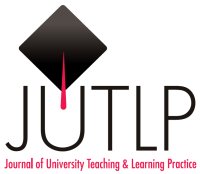| Resumo: | Systematic analysis of undergraduate curriculum design and assessment is required to ensure real world experiences are embedded in a degree structure for a high level of information literacy (IL) attainment. IL competencies and skills are critical for successful graduate outcomes. We developed a framework using a constructive alignment approach to develop the Student Attributes for Information Literacy (SAIL) and accompanying rubric with outcomes that categorize depth of application over degree progression. The rubric was used to audit IL in core units of a multidisciplinary Bachelor of Environmental Science degree before and after a cycle of curriculum design. SAIL's rubric provides educators with a practical and repeatable approach to identifying IL development in units of learning. The SAIL rubric found that IL, for most core units, was taught, practiced, and assessed at the foundational level. At the advanced level, however, students had limited opportunities for literacy training, practice, and assessment in a digital context until the end of the degree. The framework and rubric identified gaps and opportunities in IL attainment, and thus warrants further application. Making sure these gaps are addressed, with opportunities identified for learning throughout a progressive program, will ensure resilient and adaptable graduates in a digital dominant workforce. [Author abstract]
|
|---|


